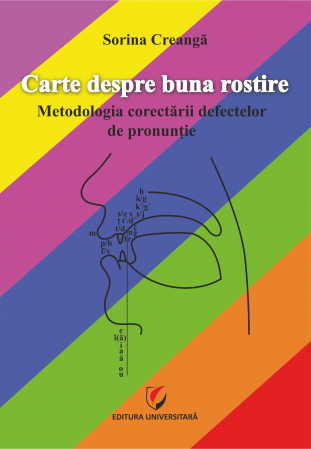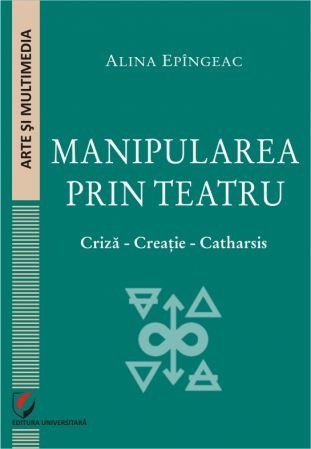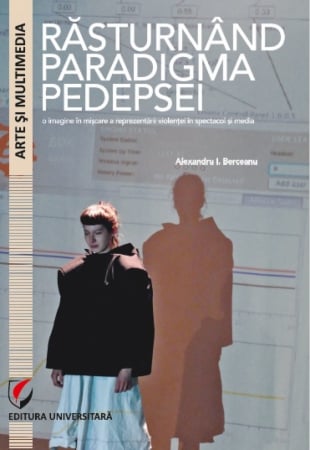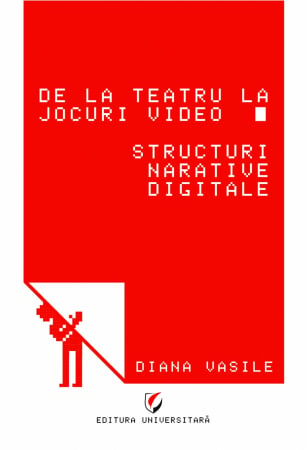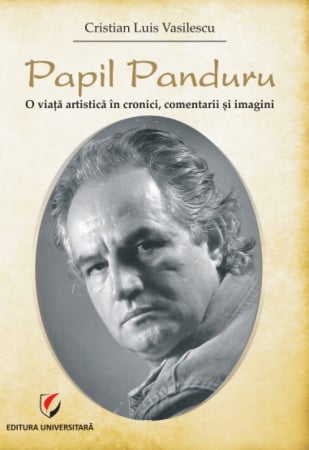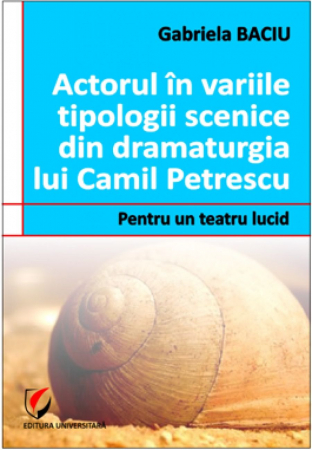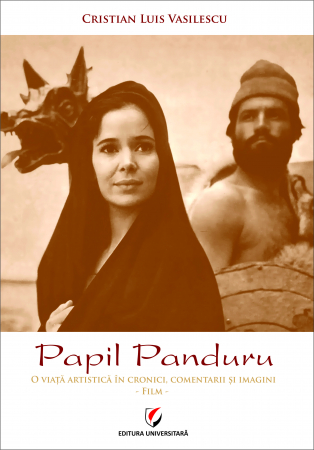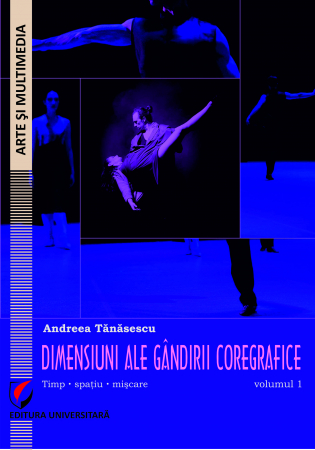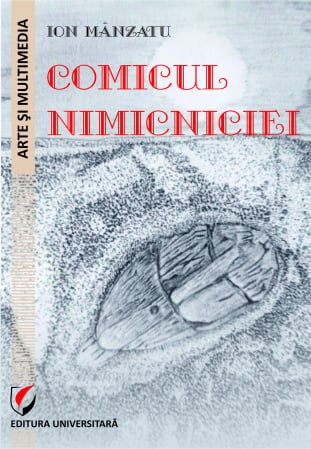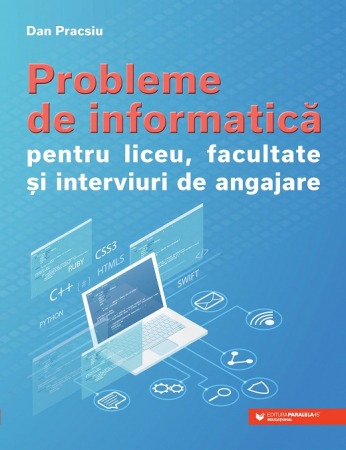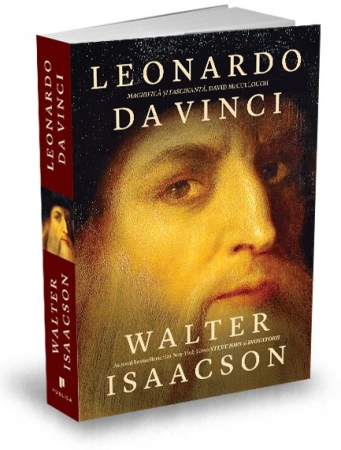ISBN: 978-606-28-0895-2
DOI: 10.5682/9786062808952
Publisher year: 2019
Edition: I
Pages: 260
Publisher: Editura Universitară
Author: Ioan Carmazan - coordonator
- Description
- Download (1)
- Authors
- Content
- More details
- Reviews (0)
This is a book of scenarios. Far from being a usual fact, the appearance of a volume in this category demands first of all a formal explanation. For some, the attempt as such is in a way strange, unusual, according to the idea of offering the audience a script that did not receive "sublimation" by the act of directing it, so that it becomes a film, is in a way an anomaly, similar the one, let's say, to offer for snack only the top of a cake that was not associated with either the cream or the final decorations. It should be noted, however, that such a vision comes from the permanent conflict between the director and the screenwriter for imposing artistic and ideological options and solutions. Such a struggle for primacy has been won over time in overwhelming proportions by the director - and in fact the director doesn't even get to work, so to speak, until he has brought the screenwriter to his knees. Andrei Tarkovsky, both director and theorist, also talks about this struggle: , inevitably begins to change. You will never know the perfect screen transposition, textual, word for word. Certain deformations always occur. That's why the screenwriter's work with the director usually turns into fights and conflicts. /… / In today's cinema, the director tends more and more to become an author and it is something natural ". It seems that the directors managed to cut the discussion, so that, in a synthetic formulation, paternity - "a film of…" - proclaims exclusively the director, and not to name things like this is charged as an error as great with not having evolved beyond the idea that the sun revolves around the earth, and not the other way around.
So, if we don't have a director, we don't have a movie! Correct, as far as I'm concerned! But with the following question immediately posed: Is this the only way to approach things? "Great movies are their great directors." Everyone else, including the screenwriter, forms the "director's team." Is right? Given that the director has the last word, that's right. But, given that without a screenwriter, the director would not have existed, probably not right.
Apart from its actual artistic purpose, this book can be seen as part of a potential approach to the right to recognize the film script as a literary genre in its own right (and not necessarily dependent on the demiurgic appearance of a redemptionist director). In fact, if we define the film script from a perspective that would proclaim it to be a "final" achievement (and not from the current perspective, which sees in it only an indefinite and unfinished stage), we highlight the features that it it is a cohesive and convincing artistic offer, as it reconstructs a slice of life with an exponential exposure and outcome But we notice that these features could also be part of a possible definition of the notion of film (artistic). So what interpretations can we give to this fact? Of course, a whole casuistry can be born from this regarding the screenwriter-director relationship - but it is not the case of its development in the present pages. What I want to point out is that this book can be considered to be part of a potential struggle for the right to recognize the film script as a literary genre in its own right - the key to its approach is to stimulate the reader to imagine own "filming". And his own "filming" is the exercise of the powers of a director, the reader having nothing more to do than - like the director - to start reading the script…
-
The Book with Scenarios
Download
Foreword / 7
Ioan Carmazan - Timisoara or The Discreet Charm of Alienation after the short story “Fairy from Mures” by Bata Marianov / 23
Ioan Carmazan and Olimpia Stavarache - Steam / 93
Mirel Talos - Forta inocentei / 157
Ionel and Emanuel Mihai Udrescu - The Messenger / 199
This is a book of scenarios. Far from being a common fact, the appearance of a volume in this category requires first of all a formal explanation. For some, the attempt as such is in a way strange, unusual, according to the idea of offering the audience a script that did not receive "sublimation" by the act of directing it, so that it becomes a film, is in a way an anomaly, similar the one, let's say, to offer for snack only the top of a cake that was not associated with either the cream or the final decorations. It should be noted, however, that such a vision comes from the permanent conflict between the director and the screenwriter for imposing artistic and ideological options and solutions. Such a struggle for primacy has been won over time in overwhelming proportions by the director - and in fact the director doesn't even get to work, so to speak, until he has brought the screenwriter to his knees. Andrei Tarkovsky, both director and theoretician, also talks about this struggle: “When the director receives the script and starts working on it, then it turns out that the script, as if it was not even deep in meaning and faithful to the purpose for which it was created. , inevitably begins to change. You will never know the perfect screen transposition, textual, word for word. Certain deformations always occur. That's why the screenwriter's work with the director usually turns into fights and conflicts. /… / In today's cinema, the director tends more and more to become an author and it is something natural ". It seems that the directors managed to cut the discussion, so that, in a synthetic formulation, paternity - "a film of…" - proclaims the director exclusively, and not to name things like this is charged as an error as big with not having evolved beyond the idea that the sun revolves around the earth, and not the other way around.
So, if we don't have a director, we don't have a movie! Correct, as far as I'm concerned! But with the following question immediately posed: Is this the only way to approach things? "Great movies are their great directors." Everyone else, including the screenwriter, forms the "director's team." Is right? Given that the director has the last word, that's right. But, given that without a screenwriter, the director would not have existed, probably not right.
Apart from its actual artistic purpose, this book can be seen as part of a potential approach to the right to recognize the film script as a literary genre in its own right (and not necessarily dependent on the demiurgic appearance of a redemptionist director) . In fact, if we define the film script from a perspective that would proclaim it to be a "final" achievement (and not from the current perspective, which sees in it only an indefinite and unfinished stage), we highlight the features that it it is a cohesive and convincing artistic offer, as it reconstructs a slice of life with an exponential exposure and outcome But we notice that these features could also be part of a possible definition of the notion of film (artistic). So what interpretations can we give to this fact? Of course, a whole casuistry can be born from this regarding the screenwriter-director relationship - but it is not the case of its development in the present pages. What I want to point out is that this book can be considered to be part of a potential struggle for the right to recognize the film script as a literary genre in its own right - the key to its approach is to stimulate the reader to imagine own "filming". And his own "filming" is the exercise of the powers of a director, the reader having nothing more to do than - like the director - to start reading the script…
The publication of a book of scripts belonging to a single author (as is the case of the volume signed by Lucian Pintilie) will probably be accompanied by controversies of this type; but note that, of course, they will amplify when there are more authors (as in the case of this book), including doubts about the extent to which the book can be unitary. But is there a right measure in this regard?
It is obvious that Ioan Carmazan dominates the book - it is a big name that agrees to give the chance to authors with a different notoriety (and another experience) than him to publish in the same volume. But it is a well-known fact that great artists are generous!
Being an author with a wide and diverse work, before referring specifically to the scenarios included in this book, I will insert some general considerations regarding it, with reference here not so much to his cinematographic work, as to his literary work, written from the position of prose writer or screenwriter.
Like Andrei Tarkovsky, Ioan Carmazan fits the idea of realism, only it is not about that camouflage of the daily, which was proclaimed as "socialist realism", both in Bolshevik Russia where Tarkovsky made most of his films, but also in communist Romania where Ioan Carmazan worked his first three films. It is about a "realism" that understands and assumes the fact that reality holds both aspiration, but also imagination, and dream, and even the paranormal.
If we want to individualize realism through a qualifier, then in the case of Ioan Carmazan the suggestive could be the formula of emotional realism. In the case of others, "realism" is simply (exists). It's like a given, an almost objective one. It's like Newton's universe - it goes inexorably according to the laws and remains beautiful only by its greatness. This is not Ioan Carmazan's option. In him - and not infrequently - a breach is made in realism, because in the natural flow there is an "accident". The accident is precisely the creation, and the emotion is individual in the given cases. Emotion is the accident of realism. In Ioan Carmazan, this appears more obvious in the moments when a character is made to shout - he does it on a different frequency and in a different resonance than the flow until then. He does it in a shrill, but this shrill has a function similar to that of the speech (lines) of the Choir in the ancient tragedy. It is a problem of great finesse, which is often much easier to get over.
It's the defining gap. Mutatis mutandis, I will resort to a comparison in the desire to make this statement better understood. Tzvetan Todorov, in his famous definition of what is fantastic in literature, said that a work that immediately states (as the fairy tale does) that "Once upon a time" could not be fantastic precisely because the reader is warned that everything it takes place beyond the limits of reality, that is, in a unique and imaginary space and time; but it is fantastic when everything goes realistic, plausible, and suddenly a detail appears that throws realism in the air, and the reader suddenly wakes up with the revelation that his means of understanding are no longer functional. So with Ioan Carmazan's realism: he appears vigorously - sometimes reaching the threshold of naturalism - but at a certain moment he simply collapses his continuous flow, in order to mark an emotion "above". Hence, "emotional realism."
No matter how they express themselves, these moments are fundamentally of two kinds: the shout (we referred to it before) and the aggressive silence, in those moments when the whole background "booms" violently, but the foreground of the character belongs to the force of silence. (not silence, but silence!). To this category belong those moments of creative virtuosity that Ioan Carmazan touches. Here is the sequence. In Ioan Carmazan - instead of the sculpture in time that Tarkovsky claims - we find the center of gravity echoed. Ioan Carmazan is not so interested in what defines the statuary, as an image embedded in time and thus becoming motionless: monument, statue; but he is especially interested in what is happening at this moment, as a reverberation: the echo. In this way the emphasis shifts from visuality (the image - Tarkovsky insisted especially on this aspect, especially regarding the gestation of the transition from word to image), on audibility, echo sound, its resonance, arrhythmology.
This book opens with Ioan Carmazan, Timisoara or The Discreet Charm of Alienation, after the short story Zana de pe Mures by Bata Marianov; followed by Abur, which Ioan Carmazan signs together with Olimpia Stavarache; The Force of Innocence by Mirel Talos and The Messenger by Ionel and Emanuel Mihai Udrescu. (...)
The screenplay book is a useful book. With consistent promotion, it could become an event book. Why? First of all, of course, for its value, but also because it is not a "serial book", but it is in itself a controversy with the very idea of a script - once it contradicts a whole series of mental patterns. For most - as I touched on in the past and above - a script is not a final work, but only a "journey". A "curiosity" that speaks only partially about itself, because "totally" about the script speaks only the film, ie the screenplay treated cinematically.
The screenplay book is a useful book. With consistent promotion, it could become an event book. Why? First of all, of course, for its value, but also because it is not a "serial book", but it is in itself a controversy with the very idea of a script - once it contradicts a whole series of mental patterns. For most - as I touched on in the past and above - a script is not a final work, but only a "journey". A "curiosity" that speaks only partially about itself, because "totally" about the script speaks only the film, ie the screenplay treated cinematically.
"Why read the script when you can see the movie?" - Some say, but they forget that the script that became a film is the director's processing, and sometimes it can be very far from what the screenwriter proposed. Things have evolved distinctly in terms of theater and film. Of course, even in the case of theater, the directorial treatment is a work that everyone considers decisive, and yet no one disputes the quality of the play as a finished literary work, unlike the way things are viewed in terms of scenarios. It therefore takes several books of screenplays to accustom the reader as this category of the dramatic genre is a literary work and an artistic experience in itself.
CRISTIAN TIBERIU POPESCU

6359.png)
![The Book with Scenarios [1] The Book with Scenarios [1]](https://gomagcdn.ro/domains/editurauniversitara.ro/files/product/large/cartea-cu-scenarii-140-142653.jpg)
